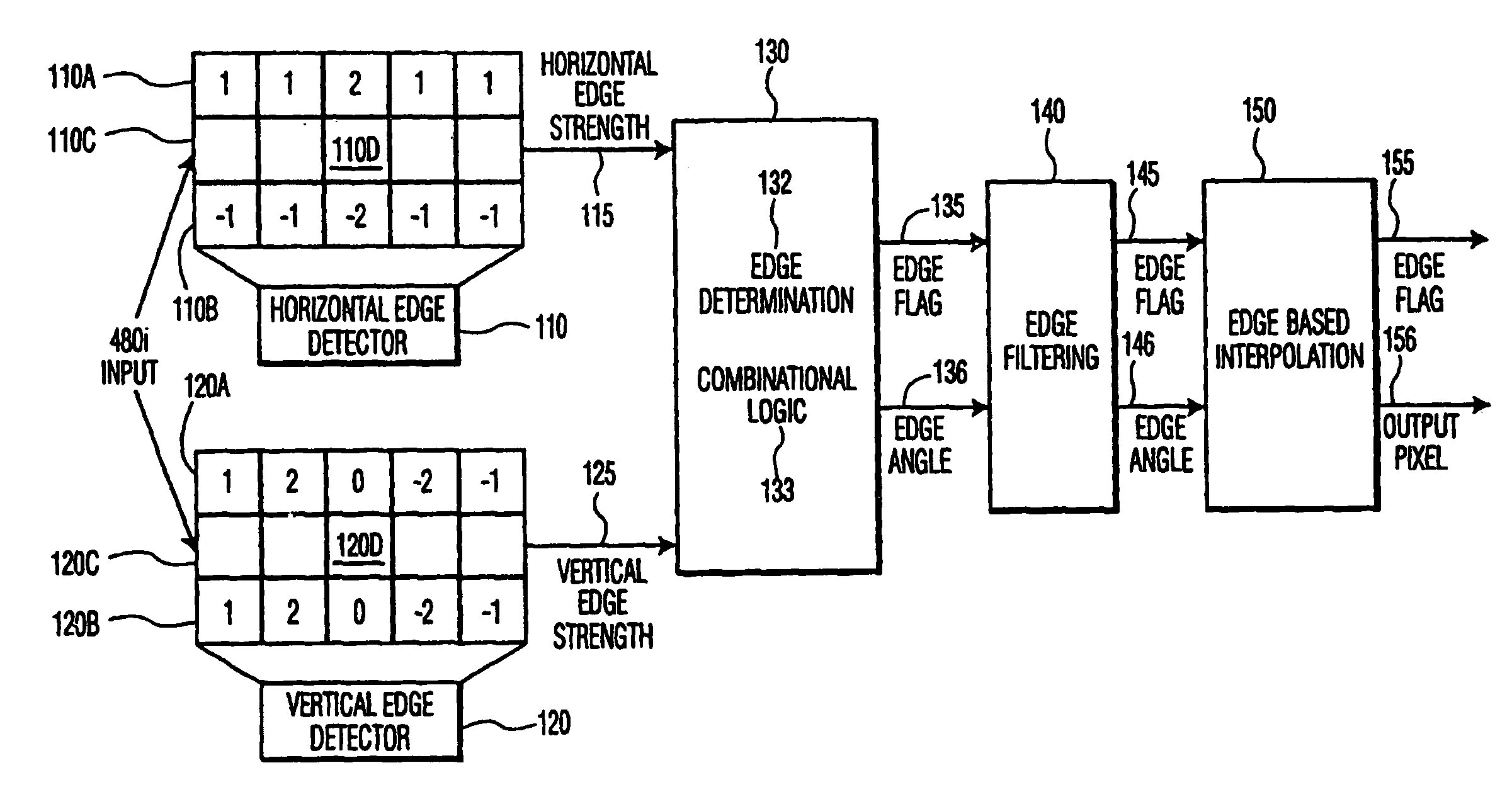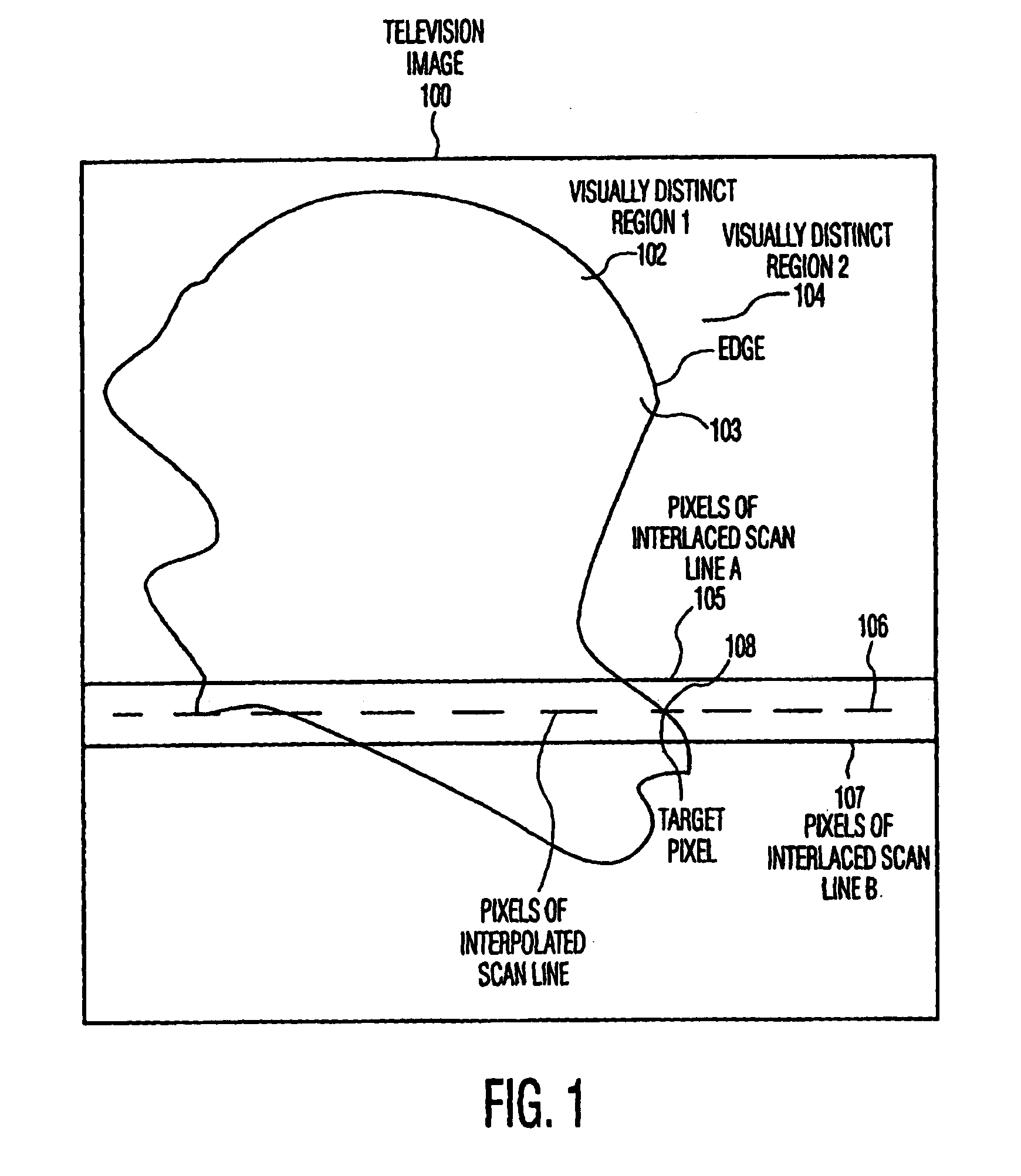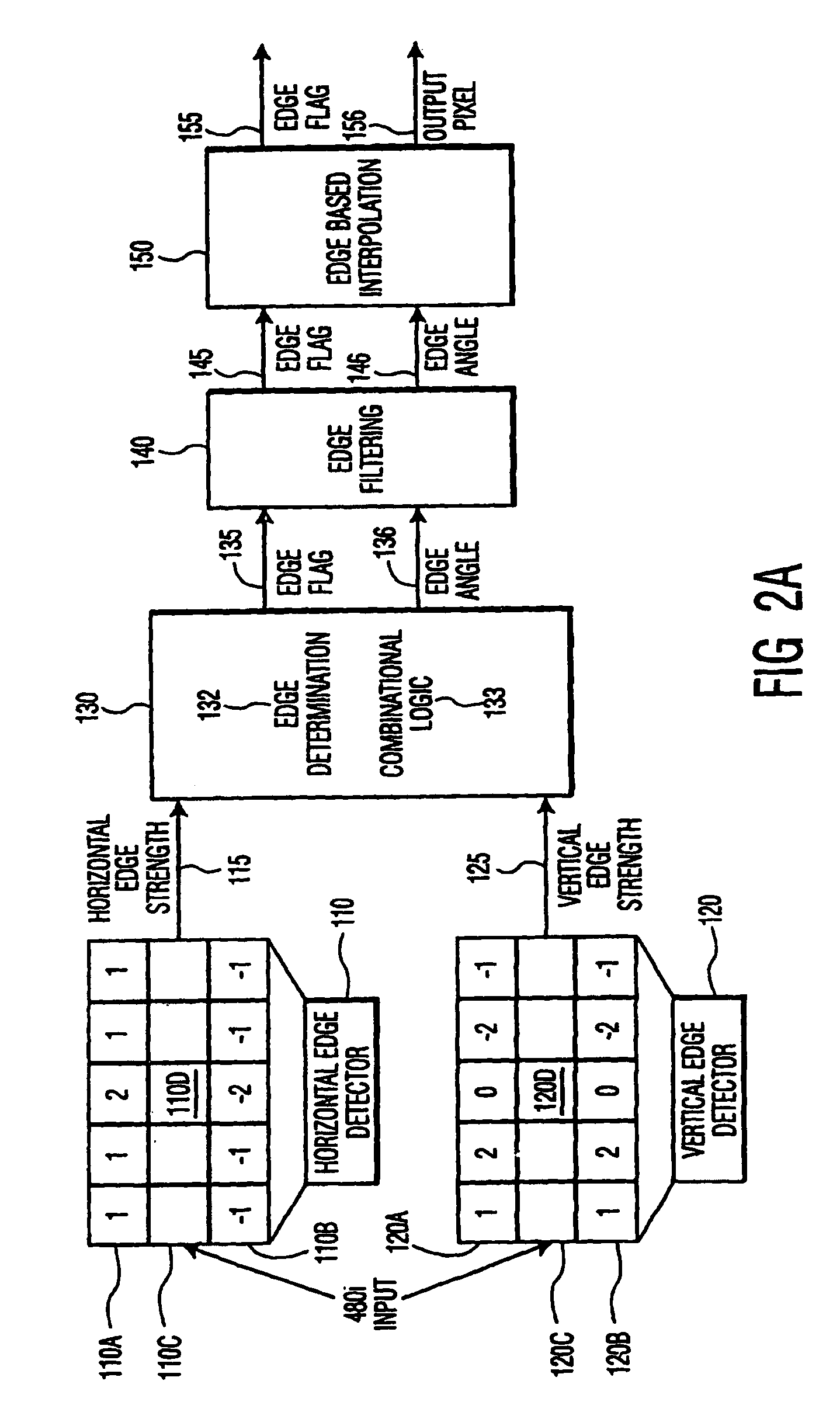Method of edge based interpolation
a technology of edge and interpolation, applied in the direction of picture reproducers using projection devices, signal generators with optical-mechanical scanning, television systems, etc., can solve the problems of poor display to the viewer, degrade the resulting frame image, and reduce the vertical resolution of the imag
- Summary
- Abstract
- Description
- Claims
- Application Information
AI Technical Summary
Problems solved by technology
Method used
Image
Examples
Embodiment Construction
[0019]The present invention relates to a method and apparatus for converting an interlace scan video signal into a progressive scan video signal, and specifically for generating picture elements (pixels) of interstitial lines in an interlaced field image, which pixels lie on an edge between visually distinct regions in the interlaced field.
[0020]In an exemplary embodiment of the invention shown in FIG. 2A, an arithmetic approximation technique is used to determine the angle of an edge at a particular pixel position to yield an interpolated pixel well within acceptable tolerance levels, while avoiding overhead of mathematical calculation or memory usage. The arithmetic approximation is achieved using combinatorial logic. The exemplary embodiment of the invention also allows for different degrees of precision in the result.
[0021]The exemplary embodiment uses a horizontal edge detector 110 and a vertical edge detector 120, that are specifically designed for use with interlace-scan vide...
PUM
 Login to View More
Login to View More Abstract
Description
Claims
Application Information
 Login to View More
Login to View More - R&D
- Intellectual Property
- Life Sciences
- Materials
- Tech Scout
- Unparalleled Data Quality
- Higher Quality Content
- 60% Fewer Hallucinations
Browse by: Latest US Patents, China's latest patents, Technical Efficacy Thesaurus, Application Domain, Technology Topic, Popular Technical Reports.
© 2025 PatSnap. All rights reserved.Legal|Privacy policy|Modern Slavery Act Transparency Statement|Sitemap|About US| Contact US: help@patsnap.com



